Nurettin Turan
Statistical Precoder Design in Multi-User Systems via Graph Neural Networks and Generative Modeling
Dec 10, 2024Abstract:This letter proposes a graph neural network (GNN)-based framework for statistical precoder design that leverages model-based insights to compactly represent statistical knowledge, resulting in efficient, lightweight architectures. The framework also supports approximate statistical information in frequency division duplex (FDD) systems obtained through a Gaussian mixture model (GMM)-based limited feedback scheme in massive multiple-input multiple-output (MIMO) systems with low pilot overhead. Simulations using a spatial channel model and measurement data demonstrate the effectiveness of the proposed framework. It outperforms baseline methods, including stochastic iterative algorithms and Discrete Fourier transform (DFT) codebook-based approaches, particularly in low pilot overhead systems.
Feedback Design with VQ-VAE for Robust Precoding in Multi-User FDD Systems
Aug 08, 2024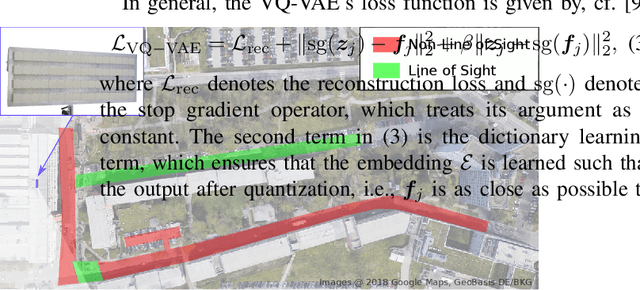

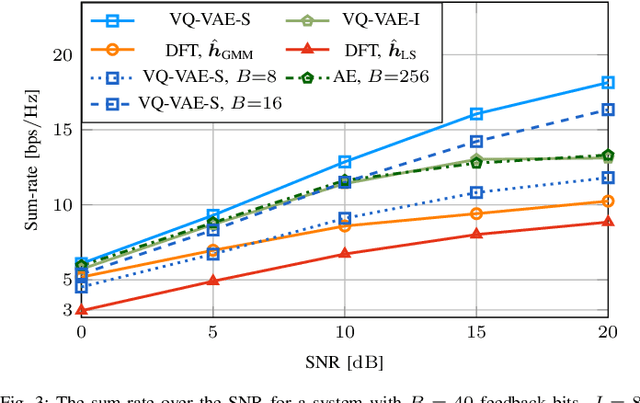
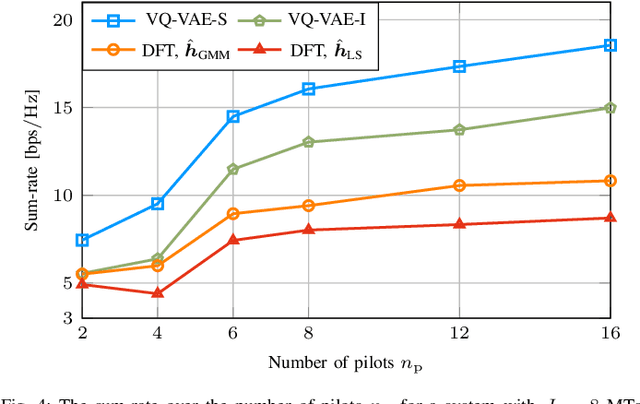
Abstract:In this letter, we propose a vector quantized-variational autoencoder (VQ-VAE)-based feedback scheme for robust precoder design in multi-user frequency division duplex (FDD) systems. We demonstrate how the VQ-VAE can be tailored to specific propagation environments, focusing on systems with low pilot overhead, which is crucial in massive multiple-input multiple-output (MIMO). Extensive simulations with real-world measurement data show that our proposed feedback scheme outperforms state-of-the-art autoencoder (AE)-based compression schemes and conventional Discrete Fourier transform (DFT) codebook-based schemes. These improvements enable the deployment of systems with fewer feedback bits or pilots.
A Versatile Pilot Design Scheme for FDD Systems Utilizing Gaussian Mixture Models
Aug 07, 2024Abstract:In this work, we propose a Gaussian mixture model (GMM)-based pilot design scheme for downlink (DL) channel estimation in single- and multi-user multiple-input multiple-output (MIMO) frequency division duplex (FDD) systems. In an initial offline phase, the GMM captures prior information during training, which is then utilized for pilot design. In the single-user case, the GMM is utilized to construct a codebook of pilot matrices and, once shared with the mobile terminal (MT), can be employed to determine a feedback index at the MT. This index selects a pilot matrix from the constructed codebook, eliminating the need for online pilot optimization. We further establish a sum conditional mutual information (CMI)-based pilot optimization framework for multi-user MIMO (MU-MIMO) systems. Based on the established framework, we utilize the GMM for pilot matrix design in MU-MIMO systems. The analytic representation of the GMM enables the adaptation to any signal-to-noise ratio (SNR) level and pilot configuration without re-training. Additionally, an adaption to any number of MTs is facilitated. Extensive simulations demonstrate the superior performance of the proposed pilot design scheme compared to state-of-the-art approaches. The performance gains can be exploited, e.g., to deploy systems with fewer pilots.
Evaluation Metrics and Methods for Generative Models in the Wireless PHY Layer
Aug 01, 2024Abstract:Generative models are typically evaluated by direct inspection of their generated samples, e.g., by visual inspection in the case of images. Further evaluation metrics like the Fr\'echet inception distance or maximum mean discrepancy are intricate to interpret and lack physical motivation. These observations make evaluating generative models in the wireless PHY layer non-trivial. This work establishes a framework consisting of evaluation metrics and methods for generative models applied to the wireless PHY layer. The proposed metrics and methods are motivated by wireless applications, facilitating interpretation and understandability for the wireless community. In particular, we propose a spectral efficiency analysis for validating the generated channel norms and a codebook fingerprinting method to validate the generated channel directions. Moreover, we propose an application cross-check to evaluate the generative model's samples for training machine learning-based models in relevant downstream tasks. Our analysis is based on real-world measurement data and includes the Gaussian mixture model, variational autoencoder, diffusion model, and generative adversarial network as generative models. Our results under a fair comparison in terms of model architecture indicate that solely relying on metrics like the maximum mean discrepancy produces insufficient evaluation outcomes. In contrast, the proposed metrics and methods exhibit consistent and explainable behavior.
A Statistical Characterization of Wireless Channels Conditioned on Side Information
Jun 06, 2024Abstract:Statistical prior channel knowledge, such as the wide-sense-stationary-uncorrelated-scattering (WSSUS) property, and additional side information both can be used to enhance physical layer applications in wireless communication. Generally, the wireless channel's strongly fluctuating path phases and WSSUS property characterize the channel by a zero mean and Toeplitz-structured covariance matrices in different domains. In this work, we derive a framework to comprehensively categorize side information based on whether it preserves or abandons these statistical features conditioned on the given side information. To accomplish this, we combine insights from a generic channel model with the representation of wireless channels as probabilistic graphs. Additionally, we exemplify several applications, ranging from channel modeling to estimation and clustering, which demonstrate how the proposed framework can practically enhance physical layer methods utilizing machine learning (ML).
Channel-Adaptive Pilot Design for FDD-MIMO Systems Utilizing Gaussian Mixture Models
Mar 26, 2024



Abstract:In this work, we propose to utilize Gaussian mixture models (GMMs) to design pilots for downlink (DL) channel estimation in frequency division duplex (FDD) systems. The GMM captures prior information during training that is leveraged to design a codebook of pilot matrices in an initial offline phase. Once shared with the mobile terminal (MT), the GMM is utilized to determine a feedback index at the MT in the online phase. This index selects a pilot matrix from a codebook, eliminating the need for online pilot optimization. The GMM is further used for DL channel estimation at the MT via observation-dependent linear minimum mean square error (LMMSE) filters, parametrized by the GMM. The analytic representation of the GMM allows adaptation to any signal-to-noise ratio (SNR) level and pilot configuration without re-training. With extensive simulations, we demonstrate the superior performance of the proposed GMM-based pilot scheme compared to state-of-the-art approaches.
Wireless Channel Prediction via Gaussian Mixture Models
Feb 13, 2024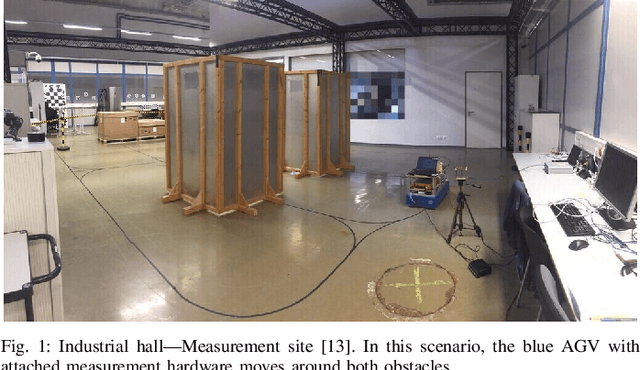
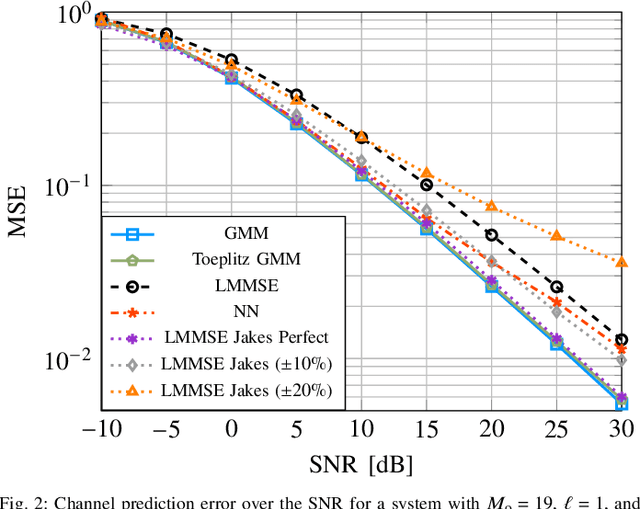
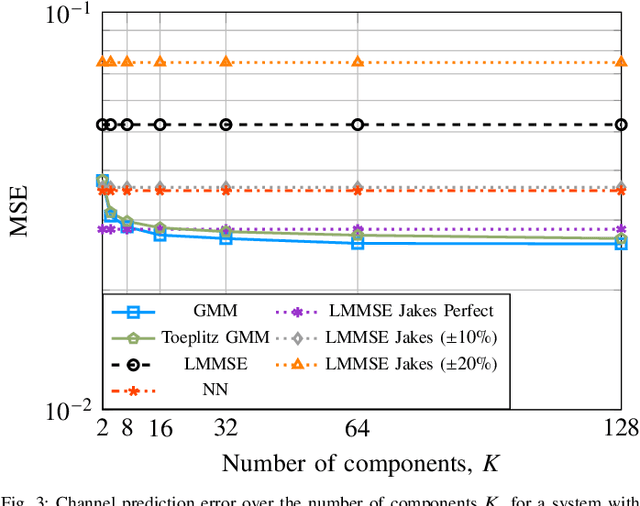
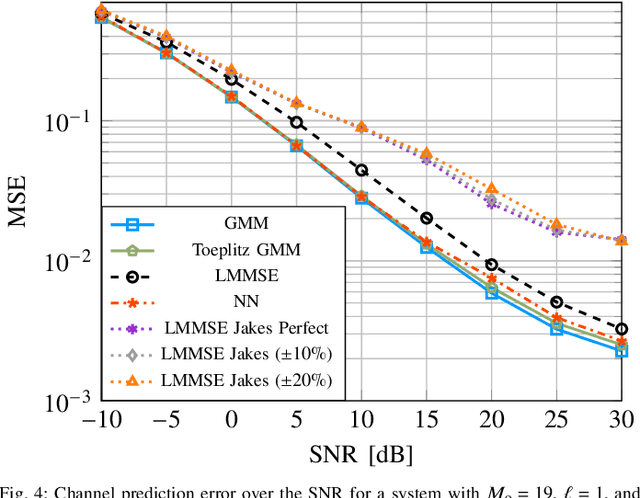
Abstract:In this work, we utilize a Gaussian mixture model (GMM) to capture the underlying probability density function (PDF) of the channel trajectories of moving mobile terminals (MTs) within the coverage area of a base station (BS) in an offline phase. We propose to leverage the same GMM for channel prediction in the online phase. Our proposed approach does not require signal-to-noise ratio (SNR)-specific training and allows for parallelization. Numerical simulations for both synthetic and measured channel data demonstrate the effectiveness of our proposed GMM-based channel predictor compared to state-ofthe-art channel prediction methods.
Limited Feedback on Measurements: Sharing a Codebook or a Generative Model?
Jan 03, 2024Abstract:Discrete Fourier transform (DFT) codebook-based solutions are well-established for limited feedback schemes in frequency division duplex (FDD) systems. In recent years, data-aided solutions have been shown to achieve higher performance, enabled by the adaptivity of the feedback scheme to the propagation environment of the base station (BS) cell. In particular, a versatile limited feedback scheme utilizing Gaussian mixture models (GMMs) was recently introduced. The scheme supports multi-user communications, exhibits low complexity, supports parallelization, and offers significant flexibility concerning various system parameters. Conceptually, a GMM captures environment knowledge and is subsequently transferred to the mobile terminals (MTs) for online inference of feedback information. Afterward, the BS designs precoders using either directional information or a generative modeling-based approach. A major shortcoming of recent works is that the assessed system performance is only evaluated through synthetic simulation data that is generally unable to fully characterize the features of real-world environments. It raises the question of how the GMM-based feedback scheme performs on real-world measurement data, especially compared to the well-established DFT-based solution. Our experiments reveal that the GMM-based feedback scheme tremendously improves the system performance measured in terms of sum-rate, allowing to deploy systems with fewer pilots or feedback bits.
Combining DoA-based and MMSE Techniques for Wireless Channel Estimation
Dec 11, 2023Abstract:This paper investigates the combination of parametric channel estimation with minimum mean square error (MMSE) estimation. We propose a two-stage channel estimation technique that utilizes the decomposition of wireless communication channels into a distinct line-of-sight (LoS) path and multiple reflected scattered clusters. Firstly, a direction-of-arrival (DoA)-based estimator is formulated to estimate the LoS component. Afterwards, we utilize a Gaussian mixture model to estimate the conditionally Gaussian distributed random vector, which represents the multipath propagation. The proposed two-stage estimator allows pre-computing the respective estimation filters, tremendously reducing the computational complexity. Numerical simulations with typical channel models depict the superior performance of our proposed two-stage estimation approach as compared to state-of-the-art methods.
Variational Autoencoder for Channel Estimation: Real-World Measurement Insights
Dec 06, 2023Abstract:This work utilizes a variational autoencoder for channel estimation and evaluates it on real-world measurements. The estimator is trained solely on noisy channel observations and parameterizes an approximation to the mean squared error-optimal estimator by learning observation-dependent conditional first and second moments. The proposed estimator significantly outperforms related state-of-the-art estimators on real-world measurements. We investigate the effect of pre-training with synthetic data and find that the proposed estimator exhibits comparable results to the related estimators if trained on synthetic data and evaluated on the measurement data. Furthermore, pre-training on synthetic data also helps to reduce the required measurement training dataset size.
 Add to Chrome
Add to Chrome Add to Firefox
Add to Firefox Add to Edge
Add to Edge